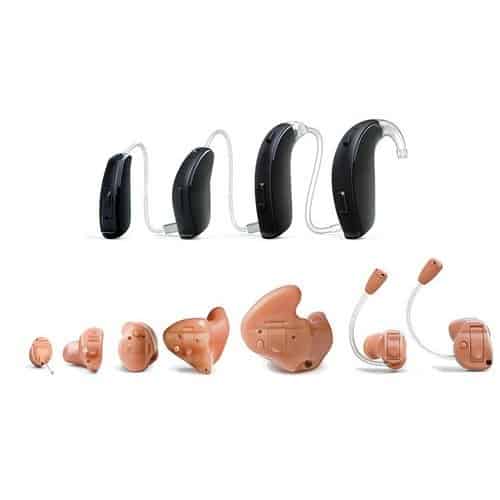Hearing Aid Overview
Hearing aids have come a long way in recent decades.
Hearing aids have come a long way in recent decades. In addition to amplifying sound at specific frequencies, DSP (digital signal processing) now allows hearing aids to process sound in a variety of ways. Individual manufacturers take advantage of DSP differently, but it has become very common for hearing aids to perform complex functions like reducing background noise, compressing speech, and assisting with spatial location by utilizing up to four microphones and networking the left and right hearing aids.
More and more commonly, hearing aids will automatically detect the type of environment you are in and switch their programming automatically to suit it. Some manufacturers are even branching out to utilize multiple computer chips to process speech and background sound entirely separately.
All of this translates to a much clearer audio image than was ever possible with hearing aids before. Depending on your specific needs and hearing issues, Ashland Audiology can “tune” your hearing aid to help you focus on what you need to hear most. We work with you over time to make sure you’re getting the right amounts of amplification, in the right places, at the right times. While this can sometimes take a while to get right, ongoing fitment is a normal part of the process. It takes a while to adjust to new hearing aids, and we’re here to help make sure you adjust successfully and get the amplification you need to live the life you want!

Types of Hearing Aids
Behind-the-Ear (BTE)
Receiver-in-Canal (RIC)
In-the-Ear (ITE)
In-the-Canal (ITC)
Completely-in-Canal (CIC)
Contact Ashland Audiology today to start the process of getting your new hearing aids!
Ashland
1901 Beaser Ave.
Ashland, WI 54806
Phone: (715) 682-9311
Fax: (715) 682-9313
Office Hours:
Monday - Thursday: 8:00 am – 5:00 pm
Friday, 8:00 am - 4:00 pm
Hearing Aid Clean & Check Hours:
Monday - Friday:
8:30 am – 3:30 pm
*Please note that the office will be closed from 12-1 pm daily for lunch. A secure drop box is available to drop off hearing aids during this time.
Hayward
Hayward Area Memorial Hospital - Specialty Clinic
11040 N. State Road 77
Hayward, WI 54843
Located in the Medical Outreach Clinic in the Heritage Building
Phone: (715) 682-9311
Fax: (715) 682-9313
OFFICE HOURS:
Every Tuesday 9:00 am - 3:30 pm
Hearing Aid Clean & Check Hours:
Call our Ashland Office to schedule an appointment to have your hearing aids cleaned.
Ironwood
Aspirus Ironwood Clinic
N10565 Grand View Lane
Ironwood, MI 49938-9622
Located on the 2nd floor of the Aspirus Ironwood Clinic
Phone: (715) 682-9311
Fax: (715) 682-9313
OFFICE HOURS:
Every other Wednesday 9:00 am- 3:30 pm
Hearing Aid Clean & Check Hours:
Call our Ashland Office to schedule an appointment to have your hearing aids cleaned.
